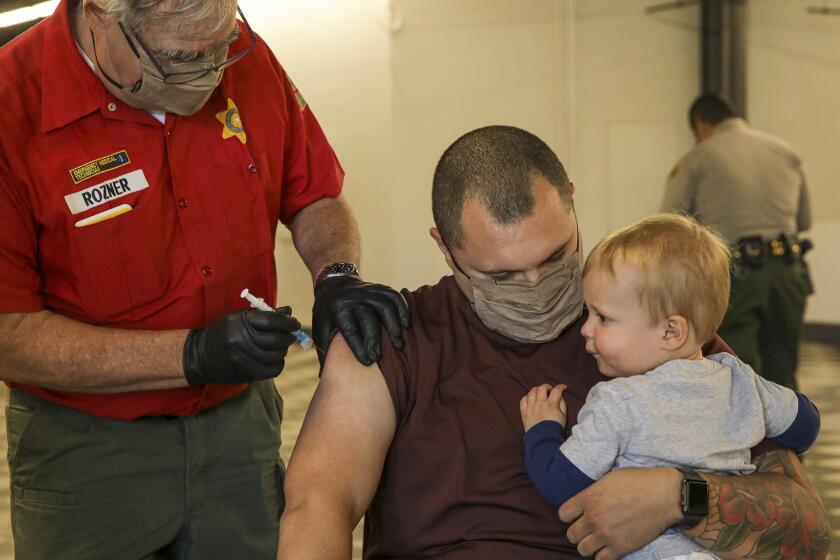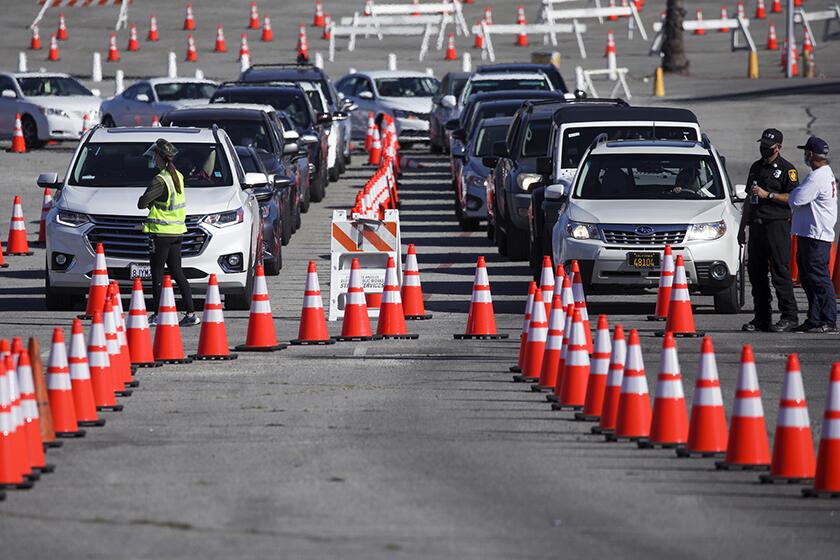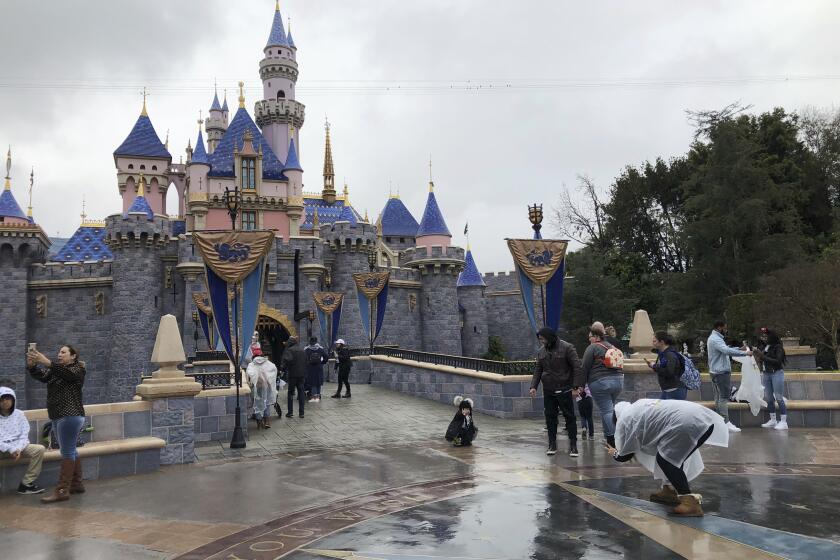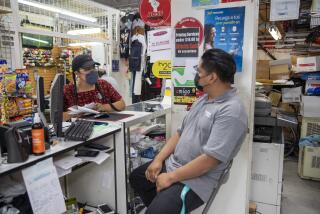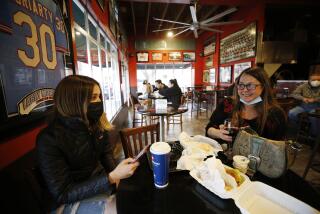Why L.A. and Orange counties will reopen faster than Ventura, Riverside, San Diego counties
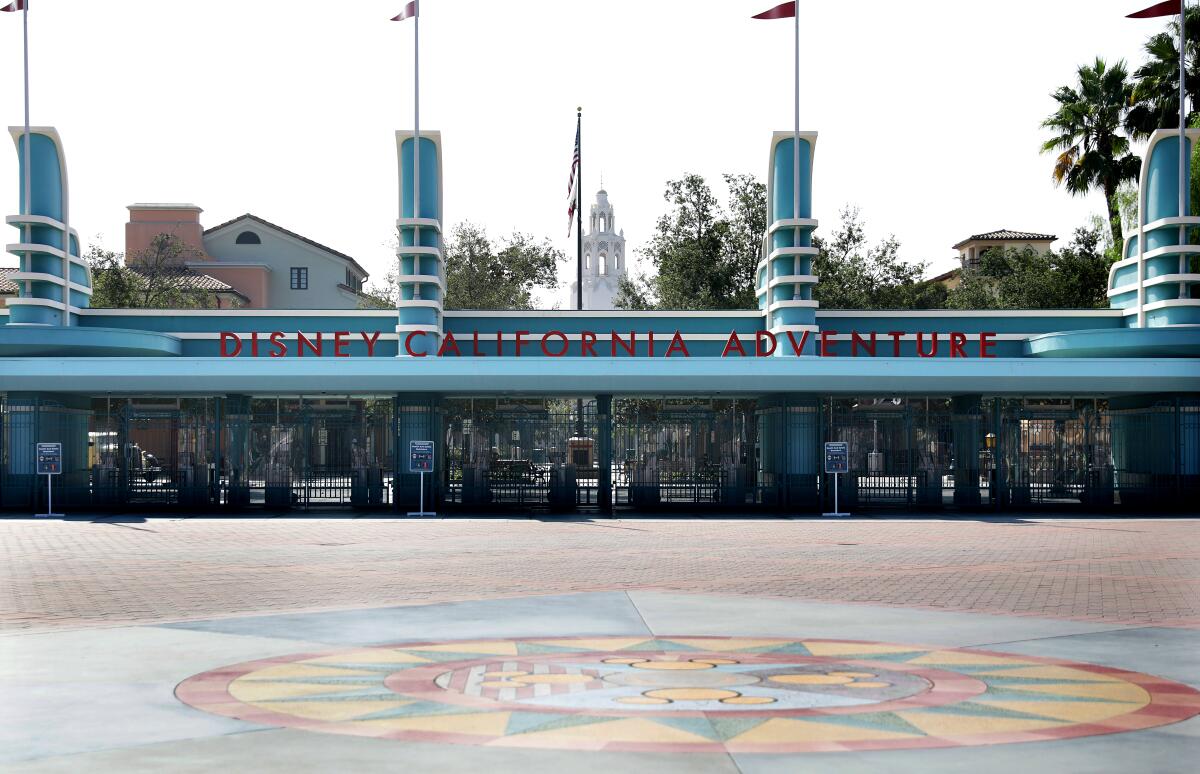
- Share via
Southern California is poised to reopen a wider swath of its economy in a matter of days. But, as often has been the case throughout the COVID-19 pandemic, the pace will be uneven — with some counties moving forward more quickly than others.
In the long run, that probably won’t be a major issue, particularly if newly confirmed infections continue to fall and more Californians are vaccinated. But the near term could see a patchwork where three of the state’s large urban counties — Los Angeles, Orange and San Bernardino — are able to begin a wider reopening before neighboring Ventura, Riverside and San Diego counties.
The first phase
According to state data released Tuesday, Los Angeles, Orange and San Bernardino counties recorded coronavirus case rates low enough to position them to escape the strictest, or purple, tier of California’s four-tier reopening roadmap.
The timing of when they can officially progress to the less restrictive red category, however, hinges on how quickly providers give vaccines to those living in California’s most disadvantaged areas.
Coronavirus case rates are low enough for Los Angeles and Orange counties to escape the purple tier, but the timing of reopenings hinges on vaccine rollout.
In a bid to address inequities in vaccine administration, California is now devoting 40% of its available supplies to residents in targeted communities — those in the lowest quartile of a socioeconomic measurement tool called the California Healthy Places index.
Once 2 million doses have been dispensed in those areas, the state will relax the criteria for counties to move from the purple to the red tier.
As it stands now, counties must have an adjusted rate at or below 7.0 new coronavirus cases per day per 100,000 people to move into the red tier. When the state hits its 2-million dose goal, counties with a case rate of up to 10 new cases per day per 100,000 people would become eligible to move forward.
California is about 73,000 doses short of 2 million, according to the latest available state data, meaning that goal is already within striking distance.
The state consistently receives more than 1 million total vaccine doses per week. And officials are hopeful supplies will continue to gradually increase as shipments of vaccines manufactured by Pfizer-BioNTech and Moderna increase and the single-dose Johnson & Johnson vaccine arrives.
Under the existing reopening framework, L.A., Orange and San Bernardino counties would not be in position to advance from the purple tier this week. However, since all three have logged adjusted case rates of fewer than 10 new coronavirus cases per day per 100,000 people for the last two weeks, it appears they will be allowed to progress to the less restrictive category soon after the state clears its vaccination hurdle.
The latest state-released average coronavirus case rates, which are adjusted based on the number of tests performed in a particular county, were 5.2 in L.A., 6.0 in Orange County and 6.7 in San Bernardino.
From schools to theme parks to restaurants, L.A. steps rapidly toward a post-pandemic world.
Next steps
After the goal of 2-million doses is reached in low-income communities, the California Department of Public Health will move quickly on county tier reassignments. They’ll “be announced the next day and will then be effective the day following that announcement,” the agency said in an email Monday.
“Our understanding is that, within 48 hours of the state announcing the vaccine trigger has been met, L.A. County, along with other counties with qualifying case rates, would move into the red tier,” L.A. County Public Health Director Barbara Ferrer said Tuesday.
L.A. County’s COVID-19 vaccine supply is expected to tighten just as more people become eligible, because of a shortage of Johnson & Johnson shots.
So by the time the state publishes its routine tier report next Tuesday — the day of the week tier assignments have typically been announced — the new, relaxed red-tier threshold should already be in place, enabling L.A., Orange, San Bernardino and some other counties to further reopen their economies.
Riverside, San Diego, Santa Barbara and Ventura counties, however, would need at least another week to move into the red tier. The latest state-tabulated adjusted case rates were 8.3 for Riverside County, 8.8 for San Diego County, 9.7 for Santa Barbara County and 9.1 for Ventura County. Two consecutive weeks of case rates below 10 are required to exit the purple tier.
As more Americans line up for COVID-19 vaccines, children have been excluded. But that is expected to change by the fall, Dr. Anthony Fauci says.
What being in the red means
Counties in the red tier can allow indoor restaurant dining and movie theaters to reopen at 25% capacity or up to 100 people, whichever is less. In-person classes also would be allowed to resume for students in grades seven through 12.
Indoor gyms and dance and yoga studios can open at 10% capacity. Museums, zoos and aquariums can open indoor activities at 25% capacity, and nonessential stores and libraries can open at 50% capacity, up from 25%.
State officials also announced last week that amusement parks would be eligible to reopen, with restrictions, in red-tier counties starting April 1 — meaning long-closed attractions such as Disneyland, Universal Studios, Knott’s Berry Farm and Six Flags Magic Mountain in Southern California could be mere weeks away from once again welcoming visitors.
L.A. and Orange counties’ decline in the coronavirus spread paves the way for Disneyland and other Southern California theme parks to reopen soon.
Capacity will be limited to 15% for parks in counties that are in the red tier, with the cap rising to 25% once a county progresses to orange, and 35% upon reaching the most lenient tier, yellow. Attendance will be limited to in-state visitors.
The state’s rules serve only as a benchmark, though. Counties have the power to impose additional restrictions — meaning it’s not a given that a region will immediately reopen fully after it meets state requirements.
Sisson writes for the San Diego Union-Tribune.
More to Read
Sign up for Essential California
The most important California stories and recommendations in your inbox every morning.
You may occasionally receive promotional content from the Los Angeles Times.
